#english-welsh border
Photo

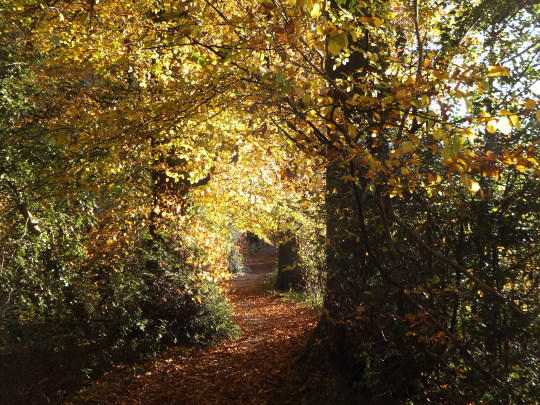
Tunnel into Autumn
#own photo#own photos#autumn#woodland#woods#forest#offa's dyke#english-welsh border#gloucestershire#lensblr#original photography#original photographers on tumblr#leaves#nature#leaf#tree tunnel#trees#hills#wye valley#november
214 notes
·
View notes
Text
“All these bilingual signs are so annoying, like why are they in welsh too it’s so stupid”
“We’re in Wales”
- a conversation I overheard between two (english) teenagers
#welsh signs in wales wow contriversial#if you look 5cm underneath the welsh they have the english translation too i know its hard for you to figure that out with your#tiny little brain thats why i thought id let you know#at least the second girl had some common sense#as my friend’s uncle once said ‘the english border is just over there if you don’t like the language then leave’#i took the mickey out of them very loudly within earshot as they walked away#my mum told me to be quiet but idc#sparrowsrandomthoughts#wales#welsh#bilingual#bilingual signs#welsh language
2 notes
·
View notes
Text
not people thinking the poll is an irish lit reference lmao
#they are going by my username which is fair enough#*gwen cooper voice* it's WELSH#ironically i have a much better claim to being welsh than being irish#my grandmother who had an irish maiden name was nevertheless baptised in wales#although born in england#her parents waited until they could take her back home to wales to christen her it seems#there's like. a massive delay between her birth and her christening in the record#and the christening is in their welsh hometown#great grandfather was from an irish family but not directly from ireland married great grandmother from a welsh family who WAS from wales#and then my grandmother was born in england but only just over the border#she died before i was born tho so i have no connection to that part of my heritage really#but we went to wales a lot when i was a kid. so it's just chance i ended up doing irish stuff rather than welsh mostly#i dabble in welsh. as we can see#usually whenever somebody in the group chat is talking about it#then i pretend i know what's going on so i can join in with the chaos#when i get better at welsh and have to pick a dialect i will go for north wales bc that's where the fam was from#but also bc i'm northern in every language except english
7 notes
·
View notes
Note
BRITISH
Hi?
2 notes
·
View notes
Photo
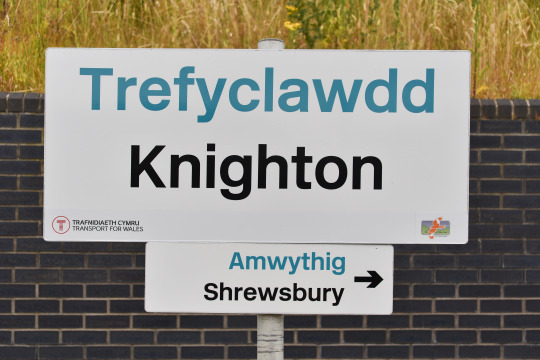
Day 1480 - Knighton Station and the end of the walk
I wish I’d not put my camera away in my rucksack by the time the train had arrived. I missed an interesting shot. It was the shortest train I’d ever been on. One coach only. Probably technically not a train but a bus on wheels.
Also useless fact time: whilst Knighton is in Wales, Knighton station is across the border in England
#knighton#station#sign#Welsh#English#walk#walking#hike#hiking#England#Wales#Cymru.#border#railway#train#1480
2 notes
·
View notes
Text
"Fascism and Welsh Nationalism", or "Stop Fawning over the FWA you cont"
This is inspired by things I've been noticing around Aberystwyth lately while out and about.
Some mfer is putting up Free Welsh Army (FWA) stickers and I have to keep on pulling them down. Why? You ask.
Fascism.
Because of the not so subtle links between the FWA and fascist movements (of which those links are quite frankly underdiscussed) this post is necessary.
So, starting with the stickers:
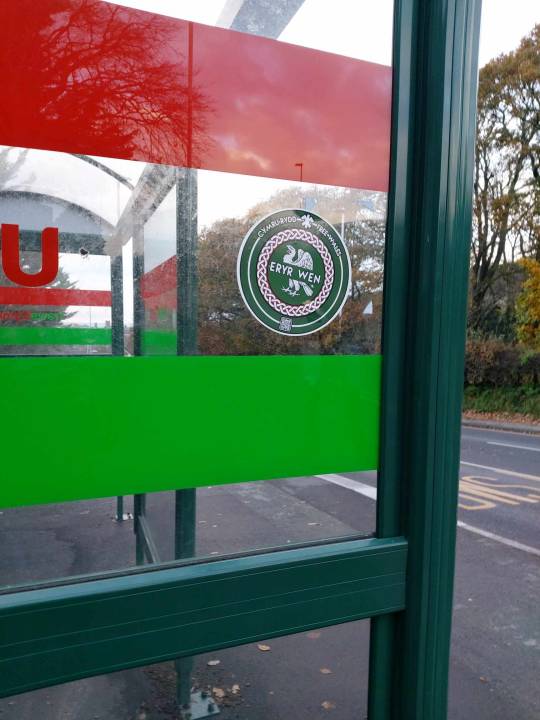
This is just one of three identical stickers I've pulled down this last week in Aberystwyth. They appear more to be car stickers than anything else and must have cost a pretty penny to print and/or purchase. They appear to have been bought directly from a website using FWA imagery and slogans - yet does not claim to be the FWA (that I can see, at least). I'm not going to link to it because they don't need any more web traffic. But we will get onto why this is significant in a bit.
Anyway, returning to the stickers - I pulled down the first one off of an electric box on North Road, opposite Vaynor St in late November. I pulled down the second (pictured) also in late November on Penglais Road off the bus stop near the hospital. And in early December I pulled down the third one off of a wall near the Spar at the end of Vaynor Street. Right off the bat we can assume the guy who wasted a lot of money on these stickers lives local to where the stickers I've found so far were. So they're lazy, for one - not venturing much further than their own front door by the looks of it.
Iconography:
I've written about the iconography of the FWA before here but it bears repeating that if fascists approve of your iconography, then that's a sign your movement is already overrun with fascists.

This is the sticker design which I've been noticing about town. Top to bottom we have "Cymru Rydd/Free Wales" which on its own is fine. No qualms with that. But between the Welsh and English text is a symbol. This one:

Now, this was the symbol of the Free Wales Army. Note that I say *was* because the FWA doesn't exist any more. Yet various actors have tried to resurrect its very unsuccessful corpse over the years. These stickers seem to belong to a new organisation which is the latest to try and capitalise on the ghost of the FWA. Now, if you're like me, you'll have already noticed this design is, for lack of a better word, a bit dogwhistley. The angled, blocky, swastika-like stylisation of what is supposedly an eagle, the black and white void of any other features and the very fact it *is* an eagle depicted all seem a bit *too* similar to the iconography of the Third Reich, don't you think?
Their design choice is no accident. It is a design which appeals to fascists while also has enough Welsh cultural reference for apologists to hide behind with a plausibly deniable reason for why their eagle Looks Like That. The white eagle is a reference to the 13th C. poem Mab Darogan, in which Myrddin prophesises that "a king shall come with heroism from among the Welsh people" and that "generous men shall be reborn of the lineage of the eagles of Snowdonia". The eagle could have literally been drawn in any way. But it rather specifically was drawn like this. That choice is not accidental.
Now this new organisation which is trying to reanimate the corpse of the FWA (we'll call them EW) has incorporated the FWA symbol into their sticker. An endorsement of the failed so-called 'paramilitary' organisation on their part, to be sure. EW also have included a different style of white eagle on their sticker as well - which is blatantly stolen from Wikipedia (the copyright is expired, but 0/10 artistic effort on their part even so). Also not to nitpick but the eagle on the sticker is grey not white so that's also a fail.
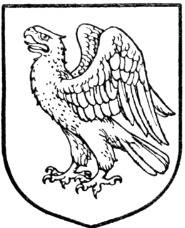
Artistic criticisms aside, the sticker is loaded with dogwhistley iconography all round. The Celtic knot border isn't necessarily problematic, however, fascists and/or neo-nazis love to slap Celtic knots onto things because they associate Celticity with whiteness. The colour scheme may also be a coincidence, but it does remind me of the fascist symbol which is the 'Flag of Kekistan" which uses the same colour scheme.
Why does this matter and who were the FWA?:
The FWA were a Welsh nationalist (supposedly 'paramilitary') outfit which formed in Lampeter in 1963 and disbanded in 1969 (just 6 years of activity). They took a lot of their cues from the IRA and were effectively fanboys of them. The group was never really considered a threat and mostly consisted of middle-aged men playing paramilitary dress-up. They did claim to be funded by the IRA and that they had dogs trained to carry explosives. Their claims remain unproven.
HOWEVER - and here's where things get sticky. A lot of the issues the FWA were publicly concerned with were and are actually valid issues (e.g. the drowning of Capel Celyn, the Aberfan Disaster etc.). The problem is that fascists or fanboys of fascists love to get their foot in the door by addressing genuine issues. But what happens is that invariably a minoritised group is blamed for the existence of said issue and naturally that leads to discrimination and violence.
The police started to get a bit antsy with the investiture of then-prince Charles as prince of Wales and the possibility of the FWA doing some terrorism. So some of the FWA's leaders were arrested just prior to this. The group officially ended in 1969.
The nationalism advocated for by the FWA was of the 'blood-and-soil' type. Not just your common or garden nationalism (which still has issues but given context is perfectly able to exist in a non-fashy way). And that's why the idolisation of the FWA in years since is sus. It appeals to romanticised nationalist notions of brave men in uniforms helping free Wales - when in reality they did little terrorism and little to actually further the Welsh nationalist cause. In fact, the leadership of the FWA fell apart after they started to disagree on whether their actions were damaging the cause rather than helping it.
Julian Cayo-Evans founded the FWA and ran it with Dennis Coslett and Gethin ap Gruffydd. Gruffydd went on to found other youth nationalist organisations after he left the FWA due to disagreements with its direction - e.g. he founded the Patriotic Front in 1964 which was later outlawed by Plaid Cymru in 1966. It goes without saying names like 'Patriotic Front' are deliberate nods to other, similarly named fascist organisations like National Front.
Legacy and The Present:
FWA's only legacy is the sycophantic fanclub which ressurects the corpse of the FWA every few years to parade it around and relive the 'glory days' of paramilitary cosplay. But aside from functionally being useless, their iconography and politics are still very much under the fash umbrella and that must be resisted at every opportunity (hence why I'm tearing down their stickers - I don't want fascists to feel welcome here). Part of why people may turn a blind eye to the FWA/sympathise is that they may not be aware of the history of the FWA or see the dogwhistles laden in their work and symbols. Some may even just assume without any other context that they're just another Welsh-language preservation group and may even support them without realising the deeper nature of the organisation beyond just preserving the Welsh language.
Which brings me back to EW. I'm going to put the rest of this under a cut, I do encourage reading the rest though and reblogging to get the word out that
It is always morally okay to tear down fascist propaganda
If you see some in your town, don't hesitate to let fash know they aren't welcome here.
EW:
So, onto the latest in a long line of paramilitary wannabes who idolise a long-dead organisation from the 60s.
The EW website seems... sketch. Lots of banners and sections asking to 'donate now' and 'take action' (with money). So right off the bat this looks like a cash-grab.
Secondly, from their own 'About' section they claim that the Welsh Independence movement has "become inundated with authoritarian Marxist entryists who regard Welsh independence as merely a vehicle for furthering their own political agendas". Which is pretty bold stuff coming from an organisation trying to do The Exact Same. There's also a LOT of emphasis on youth involvement and youth nationalism.
There's also a lot of ahistorical claims in the About section too. E.g. on the prophecy of Myrddin "From this legend derives the very name of Cymru’s greatest mountains, with ‘Eryri’ meaning the ‘Seat of the Eagles’ in Cymraeg." - this is contested as there is no one agreed upon etymology of Eryri. To claim that this is The Etymology suggests that they picked this one just because it conveniently fits the version of the mythology they're presenting. They also claim that "Owain ap Gruffydd, would adopt three such eagles as his royal coat of arms" - this is blatantly incorrect as Owain ap Gruffydd lived before the Age of Heraldry and the three eagles are actually later attributed arms.
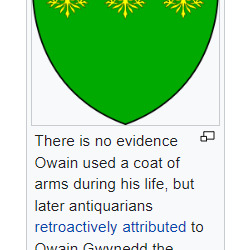
In EW's FAQ there's a section on supporting their organisation - with one paragraph saying that you can buy stickers instead "If you aren’t eligible or willing to commit to becoming an activist". Lol at 'if you aren't willing to fully commit to our FWA fanboy club you can put up some stickers instead'. Also the button to buy stickers suggests you pay via paypal "We’ll accept quick payments using PayPal and will have them shipped to you First Class" - which *totally* sounds legit (what do you bet they ask people to pay via 'friends and family instead of through business means?).
And... that's it. There's very little else on their website. It *looks* like they're trying to be a movement, but appear to lack substance (and money, judging from how many different Donate Now buttons are plastered all over the site). A hollow organisation blatantly bending history and mythology to fit their narrative, proudly using symbols designed to appeal to fascists while asking people to trust them with the future of Wales?
Dim diolch.
For further reading on why we should guard against fascism in Welsh language revival and independence, see my other post here.
Reblogs welcome for an antifascist independent Wales.
#cymraeg#cymru#free wales army#fwa#eryri#eryr wen#antifascist#annibyniaeth#welsh independence#welsh#fascism cw#neo nazism cw#white nationalism cw#long post
287 notes
·
View notes
Note
The disrespect toward indigenous peoples is what popped put at me today in one of your posts. I wonder how long the English have been looking down on the Welsh. We're the Saxons like that or is it the Normans who really thought they were better than everyone else. Cause it seems like it goes back a long way.
Oh, both, just in different ways. The Normals were imperialist, the Saxons were more theft and landgrab.
Something that makes me want to start hurling knives is the INCREDIBLY COMMON English myth that the Anglo-Saxons were a sweet innocent indigenous British people who were conquered and bullied by those mean nasty Normans (and Vikings), and because the Normans came over via France, that means everything was actually THEIR fault, and the true English i.e. the Anglo-Saxons, were victims too :(
When I say it's incredibly common, by the way, I really mean it. Enormous numbers of modern day English people believe this. I've seen BBC programs about the Viking invasions that claimed without a trace of irony that the Vikings would take slaves from "the native Anglo-Saxons". I've literally had English people comment this shit on posts of mine about Celtophobia and Welsh history. Like I'm there describing how the last Prince of Wales was locked in a wooden cage in Bristol Castle at the age of eight and lived out the remainder of his life there until his fifties so the Welsh would know their place, and some snivelling English cunt will straight up write a message going "Teehee really it was the Normans not the English though and they conquered the poor Anglo-Saxons too, poor England uwu"
Anyway in the dying days of the Roman empire in Britain one of the leading reasons for Rome abandoning Britannia was the constant waves of Anglo-Saxon invaders. There were so many the east coast of Britain became known as the Saxon Shore. There were so many the Romans built a line of forts that were and are literally called Saxon Shore Forts. There were so many that an official, historically documented, paid governmental position in Roman Britain was the Count of the Saxon Shore, i.e. the guy responsible for keeping the bastards out.
Rome had banned native military, of course, so when they then withdrew and took the armies with them, the people left had no defences against the incoming waves of Angles, Saxons and Jutes. England fell pretty quickly, Angles in the north, Saxons in the south, Jutes primarily in the east, I believe. What stopped their westward expansion was the Brythonic Celtic nations living in modern day Wales. And this is the origin of the Welsh dragon - those separate kingdoms needed a banner that united them, and represented Not Saxon. An anti-Saxon force. They chose a red dragon.
This is also the origin of King Arthur. An anti-Saxon king of the Brythons, who would repel these Germanic invaders. (It was several centuries later that England realised they should probably steal the term 'British', because otherwise they were marking themselves as 'not native'.)
Anyway the saving grace of the Anglo-Saxons in the end was actually that they were whiny little bitches who gave up trying to fight in Wales with its difficult mountains and fought each other instead. The whole sorry tale of the Heptarchy is the various Anglo-Saxon kingdoms fighting like cats in a bag, while Saxon king Offa built a dyke along the Welsh border and went "WELL YOU'RE NOT ALLOWED OVER HERE" and every Welsh king went "...we literally didn't want to conquer you anyway, you spectacularly sad and stupid man"
Oh, and of course, there's the name 'Wales'. Given to us specifically by the Anglo-Saxons. And translated by centuries of English scholars, mostly very smugly, as 'foreigners'. A fun bit of early propaganda, look - foreigners in our own country that they tried and failed to steal.
All of which is a circuitous way of saying - yeah, it goes way back.
2K notes
·
View notes
Note
I wish we could reclaim British from people who use it as a synonym of English. I'm a Welsh speaker with mostly English and Welsh ancestry - I feel British would really encapsulate my background well. But I don't want people assuming I'm being *one of those* people who use British to equal English.
That being said, I've had some people erase my Welshness and only focus on my Englishness (in a negative way) because of a taboo over finding positivity or relating to the English side of my ancestry. I live in Wales and I wish people wouldn't assign a moral value to which side of the border certain ancestors were from. I consider myself Anglo-Welsh and come from both countries in a sense.
What do you think about this and other people in these islands with split English/Welsh, English/Scottish etc. identity?
I don’t really care how anyone chooses to identify, whether that’s Ango-Welsh, Welsh-Scot or whatever.
If people want to call themselves British that’s fine as well. I just don’t really identify with ‘British’ and I never really have.
59 notes
·
View notes
Text
Breeds For All Needs Update
If the GoS theme this month wasn't a sign that I needed to get back to my Breeds For All Needs project I don't know what is!
Now for those of you who DON'T know what this is - essentially I wanted to remake all of the breeds from TS1-TS4. I also linked existing pet breeds by other creators when I found ones I liked. And then I got distracted and forgot about it.
As a refresher, here's a complete list with links to those I have already completed - please note some of these breeds I -have- done but part of the project is including links to other creators so I haven't made the official post yet:
Large Dogs
Afghan Hound (TS1; TS3; TS4)
Airedale Terrier (TS2; TS3; TS4)
Akita (TS2; TS3; TS4)
Alaskan Malamute (TS3; TS4)
American Eskimo Dog (includes small version) (TS3; TS4)
American Foxhound (TS2; TS3)
American Staffordshire Terrier (TS2 - as AmStaff; TS3)
Anatolian Shepherd Dog
Australian Cattle Dog (TS2; TS3; TS4)
Australian Shepherd (TS1; TS2; TS3; TS4)
Bernese Mountain Dog (TS3; TS4)
Black & Tan Coonhound (TS2 - as Black & Tan; TS3; TS4)
Black Mouth Cur (TS4)
Black Russian Terrier (TS4)
Bloodhound (TS3; TS4)
Bluetick Coonhound (TS3; TS4)
Border Collie (TS1; TS2; TS3; TS4)
Borzoi (TS2; TS3; TS4)
Boxer (TS2; TS3; TS4)
Brittany (TS2; TS3; TS4)
Bull Terrier (TS2; TS4)
Bull Mastiff (TS2 - as Bullmastiff; TS3; TS4 - as Bullmastiff)
Canaan Dog (TS2; TS3 - as Canaan; TS4 - as Canaan)
Chesapeake Bay Retriever (TS2 - as Chessie; TS3; TS4)
Chow Chow (TS2 - as Chowchow; TS3; TS4)
Chow-Lab Mix (TS2; TS3; TS4)
Collie (TS2 - rough collie version; TS3 - rough collie version; TS4 - rough collie version)
Curly Coated Retriever (TS2; TS3; TS4)
Dalmatian (TS1; TS2; TS3; TS4)
Doberman Pinscher (TS2; TS3; TS4)
English Foxhound (TS2; TS3; TS4)
English Setter (TS3; TS4)
Foxhound (TS4)
German Shepherd (TS1; TS2; TS3; TS4)
German Shorthaired Pointer (TS2; TS3; TS4 - as German Pointer)
German Spitz (TS4)
Giant Schnauzer (TS2; TS3; TS4)
Golden Retriever (TS2; TS3; TS4)
Golden Doodle (TS2 - as Goldendoodle; TS3; TS4 - as Goldendoodle)
Great Dane (TS2; TS3; TS4)
Great Pyrenees (TS3; TS4)
Greyhound (TS1; TS2; TS3; TS4)
Ibizan Hound (TS3; TS4)
Icelandic Sheepdog (TS4)
Irish Red and White Setter (TS3; TS4)
Irish Setter (TS1 - as Setter; TS3; TS4)
Irish Terrier (TS3; TS4)
Irish Wolfhound (TS2; TS3; TS4)
Keeshond (TS2; TS3; TS4)
Kerry Blue Terrier (TS2; TS3; TS4)
Labradinger (TS2; TS3)
Labradoodle (TS2; TS3; TS4)
Labrador Retriever (TS1; TS2 - as Black Lab, Chocolate Lab, Yellow Lab; TS4)
Mastiff (TS2; TS3)
Newfoundland (TS2; TS3; TS4)
Norsk Elk Shepherd (TS2; TS3; TS4)
Norwegian Buhund (TS4)
Old English Sheepdog (TS3; TS4)
Otterhound (TS3; TS4)
Pharaoh Hound (TS3; TS4)
Pit Bull Terrier (TS2; TS3; TS4 - as Pit Bull)
Pointer (TS2; TS3; TS4)
Polish Lowland Sheepdog (TS3; TS4)
Poodle (TS1; TS2; TS3; TS4)
Portuguese Water Dog (TS4)
Redbone Coonhound (TS2; TS3; TS4)
Rhodesian Ridgeback (TS3; TS4)
Rottweiler (TS1; TS2; TS3; TS4)
Saint Bernard (TS1; TS2; TS3; TS4)
Saluki (TS2)
Samoyed (TS2; TS3; TS4)
Shar Pei (TS1 - as Sharpei; TS4)
Siberian Husky (TS1 - as Husky; TS2 - as Husky; TS3; TS4)
Standard Schnauzer (TS4)
Tibetan Mastiff (TS3; TS4)
Vizsla (TS3; TS4)
Weimaraner (TS2; TS3; TS4)
Welsh Springer Spaniel (TS3; TS4)
Wheaten Terrier (TS3; TS4)
Whippet (TS2; TS3; TS4)
Small Dogs
American Cocker Spaniel (TS2 - as Spaniel; TS3 - as Cocker Spaniel; TS4 - as Cocker Spaniel)
American Eskimo Dog
Basenji (TS2; TS3; TS4)
Beagle (TS1; TS2; TS3; TS4)
Bedlington Terrier (TS3; TS4)
Bichon Frise (TS3; TS4)
Black Russian Terrier (TS2; TS3)
Bocker (TS2; TS3; TS4)
Boston Terrier (TS2; TS3; TS4)
Bull Terrier (TS1; TS3 - twice, once as Pitbull)
Cairn Terrier (TS1; TS3 - as Highland Terrier)
Cardigan Welsh Corgi (TS3; TS4)
Cavalier King Charles Spaniel (TS3; TS4 - as King Charles Spaniel)
Chihuahua (Long) (TS2)
Chihuahua (Smooth) (TS1; TS2; TS3; TS4)
Cockapoo (TS4)
Dachshund (TS3; TS4)
English Bulldog (TS1 - as Bulldog; TS2; TS3 - as Bull Dog; TS4 - as Bulldog)
English Cocker Spaniel (TS3; TS4)
English Springer Spaniel (TS1; TS3 - as a large dog; TS4)
English Toy Spaniel (TS3; TS4)
Field Spaniel (TS3 - as a large dog; TS4)
French Bulldog (TS2; TS3; TS4)
Havanese (TS3; TS4)
Italian Greyhound (TS2; TS3; TS4)
Jack Russell Terrier (TS1; TS2; TS3; TS4)
Lhasa Apso (TS4)
Maltese (TS4)
Miniature Bull Terrier (TS2)
Miniature Pinscher (TS3; TS4)
Miniature Poodle (TS1; TS2; TS3 - as Poodle; TS4)
Miniature Schnauzer (TS2; TS3; TS4)
Papillon (TS3; TS4)
Parson Russell Terrier (TS3 - as large dog; TS4)
Pekingese (TS3; TS4)
Pembroke Welsh Corgi (TS3; TS4)
Pomeranian (TS3; TS4)
Pug (TS1; TS2; TS3; TS4)
Puggle (TS2; TS3; TS4)
Schipperke (TS2; TS3; TS4)
Schnoodle (TS2; TS3; TS4)
Scottish Terrier (TS1; TS3; TS4)
Shetland Sheepdog (TS3; TS4)
Shiba Inu (TS2; TS3; TS4)
Shih Tzu (TS3; TS4)
Silky Terrier (TS3; TS4)
Smooth Fox Terrier (TS2; TS3; TS4)
Staffordshire Bull Terrier (TS2; TS3 - as large dog; TS4)
Toy Fox Terrier (TS3; TS4)
Welsh Corgi (TS1)
West Highland White Terrier (TS3 - as West Highland Terrier; TS4)
Wire Fox Terrier (TS3; TS4)
Yorkshire Terrier (TS3; TS4)
Cats
Abyssinian (TS2; TS3; TS4)
American Bobtail (TS3; TS4)
American Longhair (TS3; TS4)
American Shorthair (TS1 - as Brown Tabby, Orange Tabby, Tortoiseshell; TS2 - as Shorthair Tabby, Tuxedo Cat; TS3 - also as Black Cat, Shorthair Tabby, Tuxedo; TS4 - also as Black Cat, Tabby, Tuxedo)
American Wirehair (TS4)
Balinese (TS2; TS3; TS4)
Bengal (TS3; TS4)
Birman (TS2; TS3; TS4)
Bombay (TS1; TS2; TS3; TS4)
British Shorthair (TS1 - as Silver Tabby British Shorthair; TS2; TS3; TS4)
British Longhair (TS3; TS4)
Burmese (TS2; TS3; TS4)
Calico (TS1 - as Calico, Calico - Black, Calico - Red; TS2; TS3; TS4)
Chatreux (TS2; TS3; TS4)
Colorpoint Shorthair (TS3; TS4)
Cornish Rex (TS3; TS4)
Devon Rex (TS3; TS4)
Egyptian Mau (TS1; TS2; TS3; TS4)
Exotic Shorthair (TS2)
German Rex (TS3; TS4)
Havana Brown (TS2; TS3; TS4)
Himalayan (TS2; TS3; TS4)
Japanese Bobtail (TS1; TS2; TS3; TS4)
Javanese (TS3; TS4)
Korat (TS3; TS4)
Kurilian Bobtail (TS3; TS4)
La Perm (TS3; TS4)
Lykoi (TS4)
Maine Coon (TS1 - as Maine Coone; TS2; TS3; TS4)
Manx (TS1; TS2; TS3; TS4)
Norwegian Forest (TS2; TS3; TS4)
Ocicat (TS2; TS3; TS4)
Oriental Shorthair (TS2; TS3; TS4)
Oriental Longhair (TS4)
Persian (TS1 - as Perisan, Bi-Color Persian; TS2; TS3; TS4)
Ragdoll (TS1; TS2; TS3; TS4)
Russian Blue (TS2; TS3; TS4)
Savannah (TS3; TS4)
Scottish Fold (TS2; TS3; TS4)
Siamese (TS1; TS2; TS3; TS4)
Siberian (TS2; TS3; TS4)
Singapura (TS2; TS3; TS4)
Somali (TS3; TS4)
Sphynx (TS1; TS4)
Tonkinese (TS2; TS3; TS4)
Turkish Angora (TS2 - as Turkish Agora; TS3; TS4)
Turkish Van (TS1)
Bonus
Albino (TS1)
Cheetah (TS1)
Dingo (TS3; TS4)
Fox (TS4)
Pink Poodle (TS1)
Raccoon (TS4)
Robot Cat (TS1)
Robot Dog (TS1)
Star Dalmatian (TS2)
Tiger (TS1)
Turkish Blue (TS1)
21 notes
·
View notes
Photo
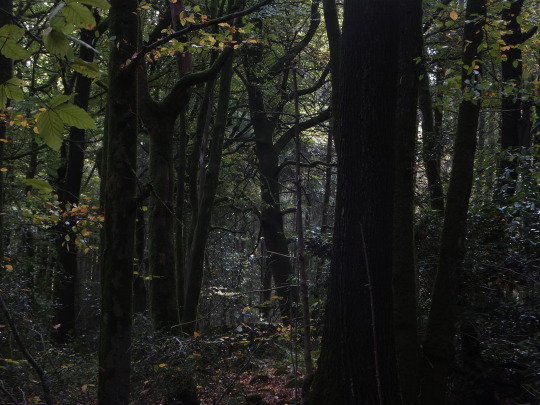
Ninewells Wood
#own photo#forest#woods#trees#autumn#november#wales#wye valley#english-welsh border#nature#dark nature#leaves#fairytale#folktale#lensblr#orignal photography#nature photography
121 notes
·
View notes
Note
since we're at the topic of LIs being animals... what about LIs as dogs ? how would dog Whitney act ?
Whitney is a pomeranian and you can't change my mind
AKC dog groups wasn't working so this took a while
Whitney: Pomeranian | Vibes and proud, bark a lot if not trained well, small dog syndrome
Kylar: Hungarian Vizsla | separation anxiety, lap dog despite size, highly intelligent, curious, and sometimes manipulative
Sydney: Pembroke Welsh Corgi | Playful, Tenacious, Friendly, Bold, Outgoing, Protective
Robin: Bichon Frise | soft, sweet, and naturally social
Avery: Siberian Husky | Stubborn, fastidious, dignified attitude
Alex: Border Collie | Intelligent, Tenacious, Keen, Responsive, Energetic, Alert, Loyal, Athletic
Eden: Boerboel | strong watch and guard-dog instincts, self-assured, fearless, highly intelligent, protective
GH: English Pointer | Even Tempered, Kind, Affectionate, Amiable, Loyal, Active
BW: Bloodhound | Even Tempered, Stubborn, Affectionate, Gentle
#dol#dol whitney#whitney the bully#dol kylar#kylar the loner#dol sydney#sydney the faithful#sydney the fallen#dol robin#robin the orphan#dol avery#avery the businessperson#dol alex#alex the farmhand#dol eden#eden the hunter#dol great hawk#the great hawk#dol black wolf#the black wolf#degrees of lewdity#asks#LIs as animals
41 notes
·
View notes
Text

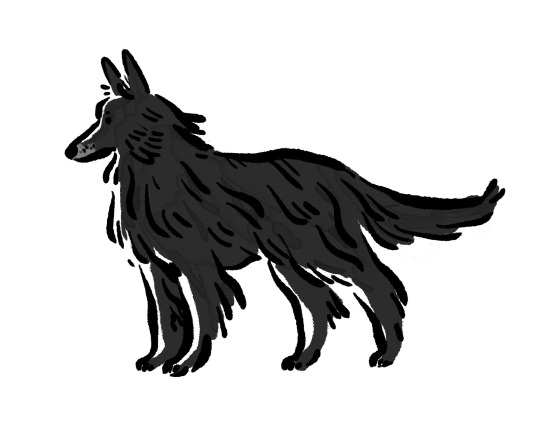

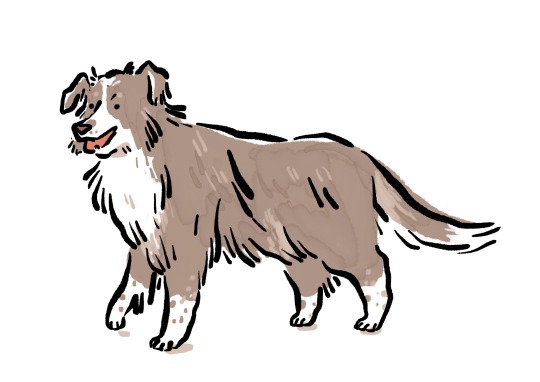

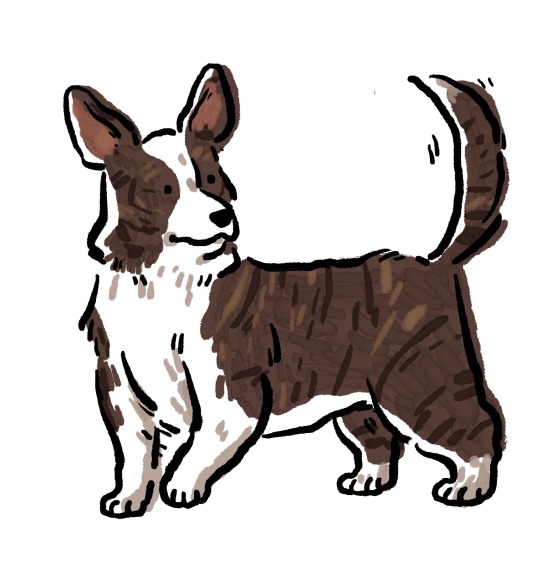



dogs what I have drawn part THREEEE
English Bull Terrier, Belgian Shepherd Groenendael, Nova Scotia Duck Tolling Retriever, Border Collie, Borzoi (ft Parsnip), Cardigan Welsh Corgi, CHIHUAHUAS, Podenco Iberico, Patterdale Terrier
73 notes
·
View notes
Note
Can you give an overview of your conworld and language for new people?
Absolutely! :D
The World
The setting I write in (hereafter "Boralverse") is an alternate history of Earth. The original difference from our own history (hereafter "IRL") is the existence of the island of Borland (Istr Boral) between Great Britain and Denmark, inspired by the IRL existence of Doggerland.
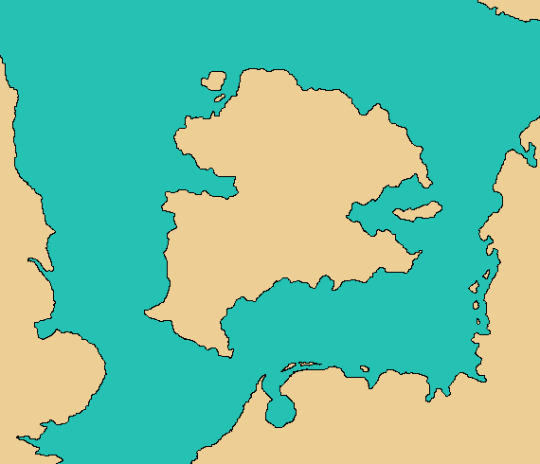
The human pre-classical history of Borland can be summarised as:
With sea level rise about 8k years ago, Borland was cut off from the continent and from Britain (this is when Doggerland was submerged IRL); some Stone Age people remain. They leave some monuments—burial mounds, the Çadrosc labyrinth—and were farmers, but they had no writing or ironworking.
The Celts arrive in Borland shortly before they settle Britain in the second millennium BCE, taking up iron tools and establishing many tribal groups. Due to some later migration from Britain to Borland, they speak a language (Borland Celtic) which is most closely related to Proto-Brythonic.
I assume that as far as possible the history of the rest of the world is indistinguishable from the IRL history up to this point. I continue to do so while the Romans invade and settle Borland shortly after Britain, despite conceding to credulity and allowing a few classical references:
...in Ptolemy's description of the Pritannoi we can understand he referred to the Insular Kelts of Ireland, Britain and Borland as a whole...
...contrasting Hadrian's policies in Britain and in Borland is vital for understanding their different fates in the post-Classical age...
where I admit that the Roman Empire having an entire additional province should probably have some observable effects.
Once the Western Roman Empire collapses, I start properly diverging Boralverse history from IRL history. This begins with a different pattern of Anglo-Saxon migration; the two petty kingdoms of Angland and Southbar arise in western Borland, while the settlement of England proceeds slightly slower than IRL.
Historical divergence spreads through western Europe over the next few centuries, and by 1000 CE things are beginning to go off the rails all across Eurasia and North Africa. I leave the history of the Americas the same until Old World contact (via Basque fishermen stumbling across Newfoundland in 1470 CE), and likewise with Australia.
The map below shows Europe in 1120, during the Second Tetrarchy Period. At this time, Europe was unusually centralised, with four great empires: the First Drengot Empire (red), the German Empire (brown), the Second Roman Empire (purple) and the Single Caliphate (green).
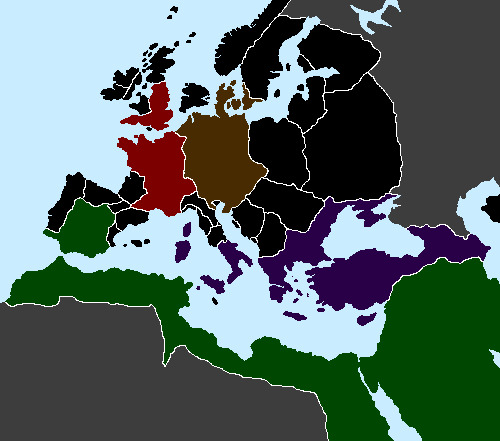
In the modern era, my hope is that the Boralverse world feels fractally uncanny; at every scale something is unexpectedly different, from political borders and languages to fashion and pop culture references.
For clarity, I employ an inconsistent Translation Convention when writing from a Boralverse perspective, mostly using IRL English but peppering in calques of Boralverse English jargon for flavour, such as threshold force "nuclear power" or jalick "garment socially equivalent to a tuxedo".
The Language
The original motivation for this alternate history setting is Borlish (Borallesc), the Romance language spoken on Borland.
It picked up a few Borland Celtic loanwords from the existing population at the time of the conquest (macquar ~ Welsh magu "raise, rear"; vrug ~ Welsh grug "heather"), but was much more influenced through the first millennium by Anglo-Saxon settlement and then Norse conquest during the Viking Age. The following is an example of late Old Borlish (ca. 1240):
…sovravnt il deft nostre saȝntaðesem eð atavalesem n iȝ atrevre golfhavn seȝ hamar dont y verb divin ismetre ac povre paian. peðiv soul ez font istovent por vn nov cliȝs d istroienz istablir…
…uphold our most sacred and ancient duty to let Gulfhaven be the centre from which we will send the Word of God to pagan lands. We ask only for the necessary funds for a new teachinghouse…
The Modern Borlish language has undergone spelling standardisation (most recently deprecated some irregular spellings in 1870), and contains many more Latin and Greek loanwords, along with borrowings from languages across the world.
Y stal zajadau dy marcað nogtorn accis par lamp fumer eð y lun fragnt de mar receven cos equal party a domn pescour pevr jarras e fenogl gostant tan eð eç nobr robað n'ornament fluibond ant queldin raut frigsað ne papir cerous.
The night market's various stalls lit by smoky lamps and the sea-shattered moon welcomed flocks of fishwives sampling paprika and fennel as well as notables in flowing finery carrying stir-fried suppers in wax papers.
In terms of sound changes and grammatical developments, the major points include:
Intervocalic lenition /p t k b d g/ > /v ð j ∅ ∅ ∅/: catēna > caðen "chain", dēbēre > deïr "must".
The use of ç (and c before e i y) for /ts/, and the use of g in coda to represent /j/. Along with some vowel shifts, this leads to things like cigl /tsajl/ "darling".
Total loss of final consonants in multisyllable words, including -s, which leads to:
Collapse of noun declension, including number; Borlish does not mark number on nouns, and if it wants to it uses demonstratives or simply relies of verb agreement: l'oc scuir pasc, l'ec scuir pascn "this boy eats, these boys eat".
24 notes
·
View notes
Text
Elphael: What's In a Name?
Earlier today, my esteemed comrade @the-unkindled-queen made a post wondering about the etymology of Elphael, Brace of the Haligtree. My initial digging turned up a few Reddit comments where the general consensus was that Elphael has its roots (ha) in Hebrew linguistics, with one interpretation being "Family of God" and another being "Work of God":


Now as a linguist and Bible scholar, I think these are awesome. I love seeing all the languages and cultures that these games draw inspiration from, and the Hebrew connection is a neat contrast with the Haligtree itself, which is linguistically Welsh. Additionally, the connection to Abrahamic faith and Hebrew words for people and acts of God is a nice throughline for the way the game portrays Miquella and St Trina as Messianic protectors of the sick and poor. Add in the spiritual atmosphere of Elphael and the Haligtree (prayer rooms, mausoleums, and altar-like statues of Miquella and Malenia abound), and it's a very pleasing little theory.
Soulsborne and especially Elden Ring borrow heavily from Welsh for names and whatnot (like the aforementioned Haligtree), and out of idle curiosity I began to wonder if there was any basis whatsoever for an alternative theory linking Elphael's name to Welsh. My only reasons for going down this path were the vaguely Celtic sound of the name and the fact that the Haligtree proper has a Welsh name. I didn't find anything like this during the search that led me to the Hebrew theories, and plugging various fragmentations of "Elphael" into a Welsh->English translator didn't spit out anything of value. I was about to throw in the towel when I did what I probably should have done before faffing about with the translator and just searched "Elphael Welsh."
And oh golly do we have ourselves an Elphael. Or an Elfael.
Welcome to the infinitely confusing world of medieval Welsh history.
Medieval Wales was divided into several regions, called cantrefi. Each cantref was further divided into several territories called commotes. The cantrefi are pictured below. We're mostly concerned with the central yellow one, Rhwng Gwy a Hafren, but also remember Gwynedd. It's in orange up top.
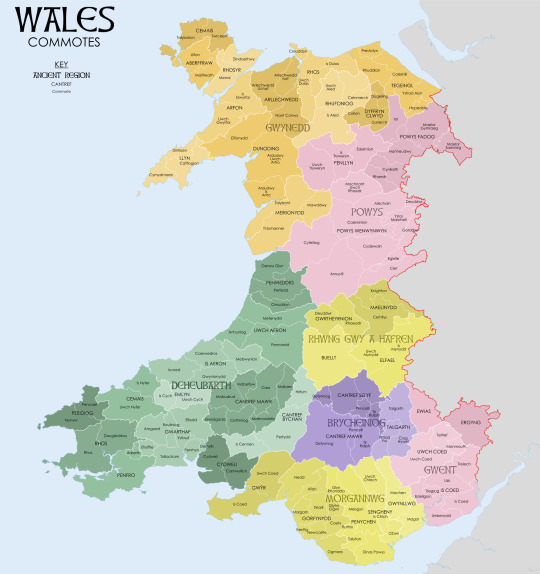
But that's for later. What we care about right now is the cantref of Rhwng Gwy a Hafren, which lies between the rivers Wye and Severn. This cantref is shown in detail below and is home to the commote of Elfael, shown in green. Also take note of Maelienydd and Buellt. They're light blue and yellow respectively, and we're going to need them later.

The history of Elfael is short and confusing, as one can expect from a fiefdom straddling the English-Welsh border during the post-Roman and post-Norman Conquest years. It didn't exist as a political entity for very long (it was only independent from 1155ish to about 1215 before dissolving completely in 1309), and changed hands often during its lifetime.
Our story begins with a man named Elystan Glodrydd, Prince of Buellt. He lived from 950 to 1010 CE, and at some point during his later life he conquered a territory called Ferlix, which was composed of Elfael and Maelienydd. When Elystan died, rulership of Buellt (Ferlix included) passed to his son Cadwgan, and then to Cadwgan's son Idnerth when he died.
Idnerth's reign is remarkable because he's the guy who lost Buellt. An Anglo-Norman noble, Philip De Braose, had conquered basically all the land between the Wye and Severn, which of course included Buellt. For some reason, at the conclusion of his conquest De Braose gave Ferlix back to Idnerth, but kept Buellt for himself. The end result being that Idnerth had gotten kicked out of his grandpa's commote and into what had originally been a conquered vassal territory. Once Idnerth died (presumably in shame), Ferlix went to his son, a man with the astoundingly awesome name of Madog. During this time, the Anarchy was starting.
The Anarchy was a civil war in Britain from 1138 to 1153. King Henry I died in 1135, and his heiress, the Empress Matilda, had many enemies who didn't want her to take the throne. In 1130, a castle had been built in southern Ferlix by one of these enemies, an Anglo-Norman named Pain FitzJohn, Sheriff of Hereford. This is the actual best name in this story. Pain FitzJohn is a fucking badass name. This castle, which was of course called Pain's Castle, was acquired by Madog in 1135 under foggy pretenses. It's likely that Pain wanted Madog's protection from Matilda, but we're not sure.
Old Madog knew that getting a castle called Pain's Castle was an achievement that couldn't be topped, and proceeded to die at age 65 in 1140, secure in the knowledge that he was better than Idnerth. He left five sons, who bucked the trend of going to war for their dead dad's land by dividing Ferlix amongst themselves. Unfortunately for them, this is when the Anarchy caught up with them. Another Norman lord, Hugh De Mortimer, invaded Ferlix in 1142. Two of Madog's sons (Hywel and another Cadwgan) were killed, and in 1146 De Mortimer killed a third son, Maredudd, in the process of capturing Pain's Castle. In 1155, Matilda's son Henry II took the throne of England, and when Hugh De Mortimer protested, Henry kicked him out of Ferlix. This left Madog's two surviving sons, Einion Clud and Cadwallon, to pick up the pieces. These guys hated each other, and neither brother could stomach ruling in consort with the other. But for some reason, they didn't kill each other, instead dividing Ferlix again in two. Cadwallon got the northern part, which came to be called Maelienydd, and Einion Clud got the southern part, which was called Elfael.
Einion Clud and Cadwallon still hated each other, and their realms were openly hostile, each brother still believing he was entitled to sole rule of all that had once been Ferlix. (Again, why didn't they just fight to the death like every other medieval family?) Things came to a head in 1160, when Cadwallon kidnapped Einion Clud and sent him in chains to Owain Gwynedd, the aptly-named King of Gwynedd, who in turn pawned him off on King Henry II. Eventually, Einion Clud either escaped or was released. It's not certain which of these occurred, but what is certain is that by 1165, Einion Clud was once again ruling Elfael, and at the Battle of Corwen the two brothers fought together against King Henry under the leadership of Owain Gwynedd. Politics are fucking weird.
There would be no happy ending, however. Hugh De Mortimer's son Roger was swearing revenge on his father's enemies. You might take this to mean King Henry, who kicked Hugh De Mortimer out of Ferlix in 1155, but no, Roger was actually a big fan of Henry II and had fought for the King during the Revolt of 1173. No, Roger wanted revenge on the guys who ruled Ferlix after his dad got yanked. The timeline here is a bit weird, but what's certain is that Roger De Mortimer killed Cadwallon in 1179. He also killed Einion Clud, but I wasn't able to find out when. I found a source saying that Roger killed Einion Clud after his father died, but Hugh De Mortimer died in 1181 and my reading on Cadwallon says that he was the prince of both Maelienydd and Elfael at the time of his death, which would only be possible if Einion Clud died before 1179. In fact, Cadwallon is said to have been ambushed by Roger's men in Elfael.
Anyway, that's all the history we care about for our purposes. Maybe I'm reading too much into things, but the fact that medieval Wales has the Lord of Elfael getting kidnapped by his brother seems a bit on the nose.
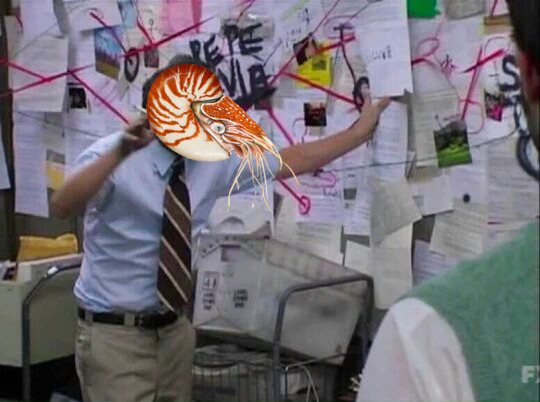
In Welsh history, the Anarchy leaves three of Madog's sons dead and the survivors are on opposing feudal factions. The Lord of Elfael is kidnapped by his brother.
In Elden Ring, the death of Marika's son sparks the Shattering, turning every remaining demigod against each other. The Lord of Elphael is kidnapped by his brother.
Either Miyazaki and Germ are fucking Super Saiyan level Welsh history scholars, or this is just an absurd coincidence. Either way, it's cool.
(tiny sidenote: this part is DEFINITELY conspiracy, but isn't it funny that our kidnapped lord has a sibling who rules Maelienydd??? Doesn't that sound a bit like... Malenia??? Obviously Malenia doesn't do the kidnapping in ER, but the names line up a bit too well...)
Sorry Niko, this is way more than you bargained for.
#elden ring#wales#welsh history#medieval history#elden ring lore#miquella the unalloyed#mohg the omen#malenia blade of miquella#the shattering#queen marika the eternal
61 notes
·
View notes
Text
"Rule Britannia is out of bounds" - How England invented Great Britain
("Rule Britannia is out of bounds"- Life on Mars, David Bowie, 1971)
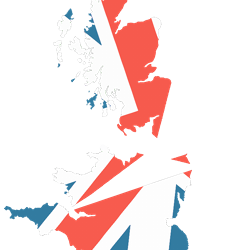
As promised, here is a more in-depth exploration of Wales' relationship to indigeneity or colonised status. And how England created the (political) concept of Great Britain when it formally annexed Wales in 1542. This is a long post but I will try and be brief where possible to do so. I graduated with a degree in Celtic Studies last year from Aberystwyth University so it's time to put that to use.
In my last post, I went over the groundwork for this conversation - so if you haven't read that one yet I strongly suggest you read that one first then come back to this one. In that first post, I establish the stickiness in claiming or applying the status of colonised onto the modern nation and people of Wales. I also explore how claims of indigeneity (intended to legitimise Welsh nativism through dubious claims of descent from the Iron Age Britons) are weaponised in modern political contexts.
With all that said - how does one categorise the suffering of Wales/its culture and language without straying into the language of the colonised?
Early Medieval English Imperial desire for Wales:
Very often, you will hear people make the claim that Wales was 'England's first colony' and that the other nations bordering England were guinea pigs for Britain's later colonial empire. My previous writing on this topic has established the difficulty in applying colonised as a term to Wales and its context. Which leads to the question of what do we describe it as instead?
For this, we need to make a distinction between colonialism and imperialism.
The two concepts are very similar (and do overlap slightly) but they have crucial differences which allow us to be more precise and succinct with our wording which aids both communication of the subject and quells misunderstanding through language which doesn't fit the situation.
Put simply, Imperialism is when one country, people or nation desires to extend power over another (usually a close-by or neighbouring territory) - especially (but not solely) through the means of expansionism.
Colonialism is also when a country, people or nation wants to extend power over another - but primarily through invasion and typically (but not always) against territories that are further afield and not immediate neighbours).
A lot of the way in which we view early British history in Wales is tinged with a kind of exceptionalism for what happened between England and Wales. Very often, what was done is framed as uniquely terrible for the time and held up as a poster child for the unique evil of England's expansionist desires. Yet all over Europe at the same time this was happening - other European nations and peoples were engaging in the same subjugator-subjugatee relationship. The exceptionalism present in framing Wales as uniquely suffering in this period is, unfortunately, borne out of the same British imperial culture which was thrust upon it and has become irrevocably entwined with culturally. It is a kind of British arrogance (which ironically crops up in anti-British arguments in Welsh independence activism) which presupposes nobody could have suffered the same or worse than they have, which demands the active ignorance of other, contemporary examples of that which they claim to oppose.
Wales was the first victim of English (later British) Imperialism - not its first colonial victim.
The build-up to and annexation of Wales by England:
Wales was annexed twice - once before the age of states and once shortly before that age dawned. The concept of states (as in, sovereign countries) didn't really exist until after the Treaties of Westphalia (1648). In which the concept of non-interference in the religious affairs of other countries (and other domestic affairs) was established and international relations was born. This is relevant to Wales' situation - as what England did to Wales happened long before the age of states began.
There was the Conquest of Wales by Edward I between 1277 and 1283. (Before that, the Norman Conquest of Wales by 1081). (However, the latter being conducted by the Normans is not necessarily equatable to the actions of England the country, which itself had only just been invaded by the Normans). And then the Laws in Wales Acts which formally incorporated Wales into the realm of the Kingdom of England in 1542.
The Conquest of Wales by Edward I overran the territories of the last Prince of Wales (from the Welsh monarchic tradition), Llywelyn the Last and divided the territories into Welsh Principalities and Marcher Lordships. This setup remained until 1542, when Henry VIII passed the Laws in Wales Acts and formally annexed Wales and made it (in all the legal senses) a part of England.
By the time international relations was in its infancy (i.e. shortly after the Peace of Westphalia) Wales had been absorbed into England for just over 100 years. The relevancy of this is that Westphalia had been about religious liberty - Henry VIII's incorporation of Wales into the Kingdom of England was partly informed by religion. Henry VIII had just broken away from Rome and established the Protestant Church of England, whereas Wales was still largely Catholic. The Laws in Wales Acts also replaced the language of the courts in Wales with English, cutting off monolingual Welsh speakers from legal representation. The language of worship became English instead of Latin. Wales was culturally assimilated into England over a long period of time. And that meant ensuring Wales followed the 'correct' religion and spoke the 'correct' language. After the Peace of Westphalia, these actions by Henry VIII to bend Wales to his new religion and to assimilate Wales into England would have been in poor taste or decried in light of the new Westphalian system that was developing in Europe. Alas, these events took place before then and temporally speaking, Wales was locked out of this recourse.
By contrast, Scotland was unified with England into the Kingdom of Great Britain in 1707 (after the Peace of Westphalia). England committed numerous acts of cultural erosion and destruction against Wales and Scotland at this time - but its Union with Scotland differs to that with Wales. Wales was incorporated into England, whereas Scotland was 'invited' to join a union between England (which then included Wales) and itself. Simplifying it greatly - like a marriage proposal in which the two spouses are *supposed* to be equals. After the Act of Union with Scotland, the whole island of Great Britain was 'unified' and thus the Kingdom of Great Britain was formed from two states - England (inc. Wales) and Scotland into one state.
Welsh Nationalism and Nationhood as separate from Statehood:
Wales and Scotland were the victims of English imperialism in many similar, but also many different ways.
Wales, having never been a 'state' was unable to acquire this status since it had long been incorporated into England by the time the concept of states had developed. Wales was unlucky in this way, because other nations on this island such as Scotland had managed to establish themselves long enough to survive into the age of states and thus became one. Because of this, Welsh nationalism cannot look to an era in which it was a free state because that did not happen. Instead, Welsh nationalism very often looks back with rose-tinted spectacles to Wales prior to Edward I's conquest and/or prior to Henry VIII's Laws in Wales Acts.
But nationhood and statehood are not the same thing - and it is the conflation of these two concepts (like the conflation of colonialism and imperialism) which has led to much of the confusion on these topics. Nationhood is acquired by a group of people who share several of these things: a common language, history, culture and (usually) territory. Not all of these things are required, but most nations have all or almost all of these qualities. Wales has a language (Welsh), a common history, culture and territory (Wales). Statehood is acquired by an association of people who have most or all of these things: formal institutions of government, laws, permanent territorial boundaries and sovereignty. Wales before 1283 very loosely had government and laws (monarchy and Laws of Hywel Dda) but had no permanent territory due to the conquest and lost some sovereignty in 1283 and total sovereignty in 1542.
Even if Wales had met all the criteria for a state in 1283, it would not have been eligible to become one - no nation in the world was able to do that yet because the concept (or proto-concept) for it would only be invented in 1648. Even England did not qualify for state status yet. Put simply, Wales got very unlucky with history and geography in such a way which prevented it from having a historical statehood post-1648 like neighbouring England and Scotland.
Naturally, when Welsh nationalism attempts to recall a past in which it was a 'state' - it is always an imagined and romanticised history. A fantasied history which generates ideas of the persecuted 'indigenous' Cymro where it shouldn't really be (in all seriousness, the injustices inflicted upon Wales by England are enough - extra additional injustices reliant upon a claim to to 'nativeness' do not need to be invented in order to be taken seriously). In the modern world, claims of nativeness in a European context are fraught, misguided, in poor taste and often copy the homework of the indigenous peoples those same European powers marginalised or colonised. In the modern world, a white Welshman claiming indigeneity is doing so in a postcolonial world and there really is no escaping that. Succinctly - the Welsh nationalist who relies upon a created sense of nativeness can only do so by drawing upon the work of marginalised native peoples living in parts of the world formerly colonised by Great Britain. To claim native status as a Welshman is to misunderstand and misappropriate history while wielding the language of the genuinely colonised while contributing nothing to it. It is purely extractive and a slap in the face of non-European native peoples everywhere. The pining for this return* to a prior point in Wales' history where it was a fully functional, sovereign nation populated only by 'native' or 'indigenous' Cymry is an alarming and ahistorical fantasy that all too easily slides into ethnonationalism and nativism -ancient or modern.
(*the choice of the word 'return' here is no accident - the desire to 'return' is inextricably linked to the alt-right dogwhistle 'retvrn' and it it is frighteningly common to see elements of that subculture crop up in Welsh nationalist calls to return to a point in Wales' history where it was 'sovreign'.)
Welsh nationalism which isn't vigilant to this kind of thinking very often will find itself arguing blatant untruths. For example, on the milder side of fake history, I've come across Welsh nationalist groups claiming symbolism from Owain ap Gruffydd's coat of arms - despite the fact he lived before the age of heraldry and he never used these arms because they were attributed to him later.

What next for Wales after 1542?:
Since Wales was fully and formally incorporated into the Kingdom of England by 1542, English colonisation of the Americas prior to 1707 naturally included Welsh colonists as well as English colonists. After 1707 Scots joined in with the now British colonisation of the Americas (both as/for/on the side of the Brits and as Scots fleeing Scotland after the Act of Union decimated Scottish Gaelic traditional culture). The Welsh, on the other hand, were more intimately involved with the colonisation of the Americas before that.
Though England spearheaded its colonisation of the Americas, Wales was not an unwilling participant dragged along by its association with and incorporation into England - Welsh colonisation, like Scottish colonisation, was often motivated by religious or cultural persecution - of which colonisation of another land was a possible solution to cultural loss in their home countries. Pennsylvania was settled by many Welsh Quakers and the idea of a Welsh Tract was floated to the Welsh settlers in 1684. The idea was to create a county which would operate in the Welsh language and serve as a vehicle for the preservation of the Welsh language. This attempt was not as successful as Wales' colony in Patagonia, Argentina in which native populations there were displaced at the behest of the Argentinian government - who needed the land settled and cleared. Welsh colonists took up this mantle and created Y Wladfa colony there in 1865.
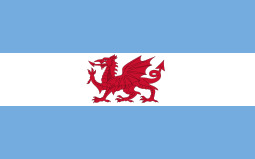
Returning to the 17th Century - Welsh people were active colonists in the Americas during this time - motivated by saving the Welsh language and freedom of religion (especially the developing Nonconformist denominations of Protestant Christianity developing at this time). It was not so much that England was forcing Wales to participate in its colonialism, but that Wales has its own wants and ends for colonialism and was motivated entirely on its own grounds.
Back at home, Wales was still hard-done-by due to England - but two things can be true at once. Wales was a victim of English imperialism, but was also a perpetrator itself of colonial violence against Native Americans. England was no such victim of imperialism of any kind and the power dynamic for England had always been one rooted in absolute expansionism.
Summary and Conclusion:
With all of that said - if you were to ask point blank if I feel it is appropriate or okay for Wales to claim it was colonised by England and that Welsh people are in some way, more indigenous to the island than any other people living here - my answer would be no, I don't think it's okay.
I can't stop people from thinking otherwise, but I can reason that perhaps we shouldn't appropriate the struggles of people marginalised by the very nation we are talking about in order to craft a victimhood which is entirely unnecessary. Wales was a victim of English imperialism - but Wales was also an active colonising European nation. In the modern world, people are thankfully more willing to listen to the wants and needs of victims of colonialism - particularly victims of British colonialism in the Americas, Oceania and Asia. But I would warn against Welsh nationalism which seeks to capitalise on that increase in indigenous visibility in order to add legitimacy to itself (necessitating the crafting of an 'indigenous' narrative which did not exist there before). We live in the modern world where indigenous peoples are being taken more seriously than in centuries past - but that does not mean the only peoples hard-done by being taken seriously are colonised indigenous populations.
I believe it comes from a deep seated insecurity within Wales in which it is not uncommon to feel like Wales is being left behind because of all of this advancement. And this insecurity manifests as rejection of anything not obviously Welsh or demonstrably 'home-grown'. It's the national equivalent of a survival mechanism - but this is detrimental not only to the cause of Welsh nationalism, but to Wales itself. I've had people say to me (and I have read in historical sources from the last 100 years in Welsh) that the LGBTQ+ movement is actually an English invention created to erode Welsh traditional culture. Or variations on that rhetoric in which it is immigrants or other minorities which are made into this boogeyman come to destroy Wales and all Welsh ways of life. And it is so demonstrably not true but also bitter to see from the hearts and minds of my fellow Welsh speakers/Welsh people. Who have been hurt so much by the historical erosion of their culture that they confuse non-threats for threats and can only resolve to obtain some more legitimacy by appropriating the language of nativeness and colonisation in this ever changing world which, right now, is listening to native peoples for once.
It's difficult to put into words, even with all of the background knowledge above - but Wales is valuable and legitimate all on its own and doesn't need to rely upon things which isn't serving it - like ethnonationalism and nativism.
I want to live in a Wales which is uncompromising not only in its own fight for recognition and respect - but for other nations and peoples' fights for the same as well. I want to live in an independent Wales which is an ally to all those who share Wales' struggle and a Wales which rights the wrongs of its past without hesitation or compromise.
Would you rather a Wales for the few or a Wales for all who call it home?
#cymraeg#welsh#wales#cymru#ethnonationalism#cymblr#nativism#indigenous#native#indigeneity#nativeness#tags for relevance#celtic nations#celticist#I know there's so many more things I could say or could add but this post is so long already#granted it's evidence this conversation sorely needs to happen#so if you have any additions or thoughts please reblog or reply in the tags#and reblog this post so that more people have a chance to read it#diolch pawb#long post
133 notes
·
View notes
Note
"It's now legal to shoot an English person with a long bow outside Chester Cathedral on a Sunday." Why this high level of specificity?
There is a commonly shared belief that it is still technically legal to shoot a Welshman dead in England, but the places cited range from Gloucester to Chester to Hereford to (insert border town here), the weapon varies (long bow, crossbow, etc), the specific place (most commonly outside a church or cathedral but sometimes a marketplace), and the time (usually Sundays but not always). The story goes, it's a law that has never technically been repealed.
Except, as I say, the details vary so wildly that I strongly suspect it's an urban myth. However, the grain of truth it's likely based on is that Welsh speakers were for a while banned from urban centres or holding any sort of public sector job, shortly after the Treachery of the Blue Books. I imagine it spiralled from there.
Anyway, I'm reversing it, but it's also a way of nicking Chester and making it Welsh now. So a double whammy, that one.
233 notes
·
View notes